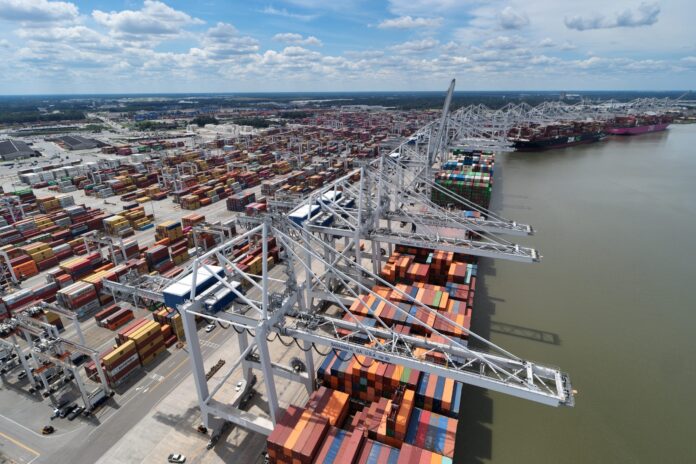Georgia Ports handled 5.25 million TEUs in fiscal year 2024 (July 1, 2023 – June 30, 2024), representing a decrease of 2.3% or 123,000 TEUs compared to the previous year.
“While we experienced lower container volumes, we have been through cycles before and are optimistic about the future,” said President and CEO of Georgia Ports Authority (GPA), Griff Lynch.
Compared to the pre-pandemic year of FY2019, GPA’s fiscal performance equates to a 3% compound annual growth rate.
Despite the slight decline in volumes, GPA noted it continues to have one of the US best connectivity rankings with 35+ vessels calling every week in Savannah.
The Authority recently completed construction of its new Garden City Terminal West facility and continues to add new Ship-to Shore cranes and Rubber Tire Gantry cranes built by the Finnish company, Konecranes.
Georgia Ports’ long-term vision to support future growth is closely coordinated with the Georgia Dept. of Transportation’s (GDOT) integrated roadway efforts. Governor Brian Kemp announced a US$1.5 billion Transportation Infrastructure Investment including a US$500 million freight programme for 18 freight carrying infrastructure projects that improve efficiency, safety and reliability for the transportation of goods across Georgia.
“At Georgia Ports, our philosophy is to continue investing for the future, even during slower periods, so that we are ready for the next up cycle,” said GPA Board Chairman Kent Fountain. “That’s how we have built one of the most reliable operations in global logistics.”
Meanwhile, the Georgia Ports Authority had a record year in Roll-on/Roll-off cargo, handling 876,000 units of autos and high/heavy machinery in FY2024, an increase of 21% or 152,435 units compared to FY2023.
Last fiscal year, GPA brought online 485,000m² of Ro/Ro storage at Colonel’s Island. Another 1.2 million m² are available for expansion, giving Colonel’s Island more room to grow than any other US auto port. GPA has also added 60,000m² of warehousing and processing space. Annual capacity at Colonel’s Island has now increased 40% to 1.4 million units.







